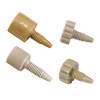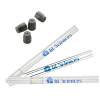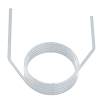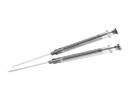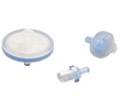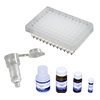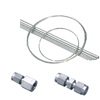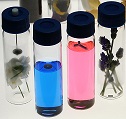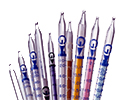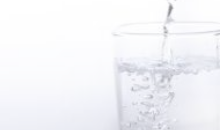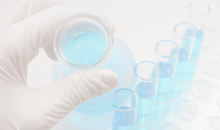Conference & Exhibition Information
Index-
Exhibition March 24 ~ March 27Analytica 2026
Analytica 2026 will be held in Munich, Germany.
Our booth is #A1-509.
We look forward to welcoming you at our booth.Munich, Germany -
Conference Information November 1 ~ November 6Dioxin 2025
The Dioxin2025, the 45th International Symposium on Halogenated Persistent Organic Pollutants (POPs) will be held in Antalya, Türkiye.
Our booth is #C1.
We look forward to welcoming you at our booth.Antalya, Türkiye -
Conference Information September 23 ~ September 25ARABLAB 2025
ARABLAB will be held in Dubai, UAE.
Our booth is H3-B25.
We look forward to welcoming you at our booth.Dubai, UAE -
Conference Information September 10 ~ September 12The 21st Beijing Conference and Exhibition on Instrumental Analysis (BCEIA 2025)
The 21st Beijing Conference and Exhibition on Instrumental Analysis (BCEIA 2025) is scheduled to be held on September 10-12, 2025 at China International Exhibition Center (Shunyi Hall), Beijing.
We look forward to welcoming you at our booth.Beijing, China -
Conference Information June 24 ~ June 1CPHI 2025
CPHI will be held in Shanghai, China.
Shanghai, China -
Conference Information June 15 ~ June 19HPLC 2025
The 54th International Symposium on High Performance Liquid Phase Separations and Related Techniques (HPLC 2025) will be held in Bruges, Belgium.
Our booth is #08.
We look forward to welcoming you at our booth.Bruges, Belgium -
Exhibition June 1 ~ June 5ASMS 2025
The 73rd Conference on Mass Spectrometry and Allied Topics will be held in Baltimore, Maryland.
Our booth is #101.
We look forward to welcoming you at our booth.Baltimore, Maryland -
Conference May 23Proteomics LC/MS: How to Maximize Sensitivity, Depth of Analysis, Throughput and Robustness
Discover how a new LC/MS system brings unmatched synergy, sensitivity, and robustness to bottom-up proteomics.
This webinar reveals how optimizing both LC and MS—not just one—can transform your peptide analysis.Webcast -
Conference January 17 01:00Chromatographic Analysis of PFAS : Method Development and Optimization
Perfluoroalkyl and polyfluoroalkyl substances (PFAS) are a large group of nearly 15,000 synthetic compounds characterized by a fluorinated alkyl chain. The US Environmental Protection Agency (EPA) has been pursuing the reduction of PFAS emissions since 2004. As legacy PFAS were phased out, a new generation of compounds known as “emerging PFAS” were introduced as a replacement. Engineered to have shorter half-lives and faster bioelimination, emerging PFAS have nonetheless raised concerns about toxicity and environmental impact. Several methods exist for monitoring PFAS in water and soil, generally variations on official methods developed by EPA and ASTM International. No official methods exist for air monitoring yet, but adaptations of EPA air collection methods and European method CEN/TS 13649 have been proposed.
All analytical techniques are affected by the ubiquitous presence of PFAS in the environment and in industrial products. Indeed, instrument components, apparatuses, lab consumables, and even skin products worn by the analyst can be potential sources of interfering PFAS. In addition to current approaches to developing highly robust and sensitive methods, this presentation will discuss best practices to eliminate or minimize the impact of these sources of interference.Webcast -
Exhibition September 24 ~ September 27WoTS
The Jaarbeurs - Utrecht, the Netherlands


